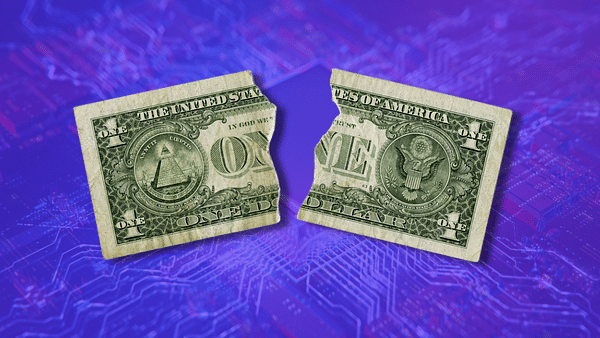According to Morgan Stanley analysts, the recent dividend cut will benefit Intel. Is hope beginning to dawn?
Intel $INTC is a much talked about stock among investors. But things have not been looking good for the company lately. But according to Morgan Stanley analysts, the company's recent moves will only benefit the company. Is hope beginning to dawn?

Before the bursting of the dot com bubble, it was one of the biggest companies, but now a lot of investors look at the company as being past its zenith. This is largely because many investors believe that the company has simply fallen behind the times, letting itself be overtaken by other competitors. Now investors are likening the company to a dinosaur among technology stocks.
Trying to sprint
In short, the company has decided in recent years to try to catch up with its competitors. With the competition well ahead, Intel has no choice but to sprint. With the return of CEO Pat Gelsinger, the company has embarked on a chase race.
Let's first outline where the company's main problem lies. In short, the company has begun to realize that the products of competitors, such as $AMD, are far superior, and in many parameters, outperform Intel's products.
So how do we get out of this? The company has only one option, and that is to start producing products that are at least equal to, but ideally better than, the competitors' products.
Another problem here was production efficiency. In short, Intel did not have efficient enough manufacturing to produce its products at a low enough cost. This is reflected in the selling prices of the company's products.
Thus, in addition to improving its products, the company also needed to make its production more efficient to be able to compete on selling prices. If the company is unable to produce its products efficiently, even some innovation will not help.
Intel took this sprint very seriously, and began building new chip factories, and upgrading some existing factories. Here, this process is estimated to cost Intel about $60 billion to $70 billion. In short, by doing this, Intel is trying to make up for its loss in the ability to make better chips, and at the same time, the company is trying to make production more efficient. This is explained quite well in this video.
https://www.youtube.com/watch?v=FqzCyLxcYcc&t=336s
Is hope beginning to dawn?
According to analysts at Morgan Stanley, hope is beginning to dawn for this company, especially after Intel's latest move. That move was a dividend cut of about 65%. This cut was recently announced by Intel itself, cutting its dividend from 36.5 cents per share to 12.5 cents per share.
The decision "reflects the board's deliberate approach to capital allocation and is designed to best position the company for long-term value creation.
Indeed, the company has decided that instead of paying a higher dividend to shareholders, it will use the funds specifically for the aforementioned fighter sprint.
This is because, according to analysts, another option that could hurt the company in the future is dwindling, and that was the aforementioned dividend cut.
We see a balanced reward for risk. Although this event may put selling pressure on the stock in the near future. From our perspective, paying a dividend is counterproductive given the ambitious and highly capital intensive strategy of returning to growth.
Based on these comments, it is probably clear that Morgan Stanley analysts see this path as the best one Intel can currently take. In short, the company is now in a position where it can use every dollar it can to complete the construction and upgrade of its manufacturing plants.
Putting it in numbers, the company paid out roughly $6 billion in dividends for 2022. Given that there will be a roughly 65% dividend cut, that means the company should pay out roughly $2.1 billion. This move will therefore give the company roughly USD 4 billion extra each year, which it can use to complete the aforementioned activities.
There are also subsidies available for US semiconductor manufacturers to help bring the US back into the chip-making limelight. Personally, therefore, I assume that Intel will, of course, along with this money saved, also use this support to finance the construction and modernisation of its manufacturing plants.
WARNING: I am not a financial advisor, and this material is not intended as a financial or investment recommendation. The contents of this material are for informational purposes only.